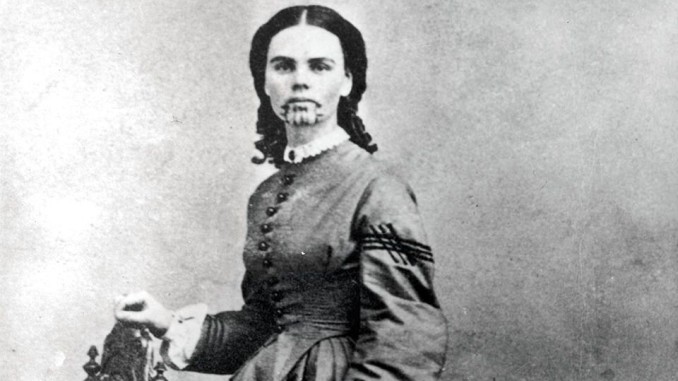
Visiting the Fourr Cemetery and Oatman Massacre site are an interesting side trip from the Painted Rock Petroglyphs site.
The William and Lucinda Fourr, and their family, were pioneers who settled on Oatman Flat in the 1870s. William ranched and was an agent for the Butterfield Overland Stage. Of the six children they had between their marriage in 1868, and when they left in the area in 1880, four died here. The Fourr Cemetery is where the children are buried: Seven year old A.F., month old F.F. — on the same sad date in January, 1877 — and an unnamed baby, still born. (I’m not sure about the fourth child.) The Fourrs eventually had eight children who survived to adulthood, with William living until 1934, and Lucinda 1942. The Fourr Cemetery is very tiny, but well maintained and quite peaceful. Stanley Heisey, a Life scout of Troop 263, has installed a bench, a log book, and otherwise restored the site. Amazingly, there is 4-bar Verizon reception here, perhaps due to the antenna farm on Oatman Mountain.
After paying your respects to the Fourr children, it is a slippery, dusty, one-mile drive to the Oatman Memorial. The sand is deep, and soft, and you will get stuck without AWD. As the area is Gila River flood plain, and an at least semi-functional farm, there may be brush that has been washed / plowed into the road. You may need to stop short, and walk a bit.
CARS SHOULD NOT PROCEED PAST THE FOURR CEMETERY!
The Oatman family were Mormon pioneers in a party that left Independence, Missouri, in August, 1850. The original party of 85-93 schismatic Brewsterites, further splintered as it travelled west, until the Oatman family was going it alone when they reached the Gila River’s Big Bend. Despite being warned about hostile indians, they proceeded. It was not a wise choice. The parents, Royce and Mary, and four of the seven children were massacred by Western Yavapai. (Not Apache.) A son, Lorenzo, 15, escaped despite being wounded. 14-year old Olive, and 7-year old Mary Ann were captured. Mary Ann died during a later famine at age 10 or 11, while Olive assimilated, possibly having children, before being repatriated at age 19.
We followed a farm road that had very deep, very fine, dusty surface. I had fun trying to keep my SUV pointing straight ahead as the rear waved back-and-forth. ![]() After a mile, we got out and walked the rest of the way to what I thought was the massacre site, but which turned out to be the Oatman Memorial. The memorial was erected by the Daughters of the American Revolution in 1954. It, however, is not the massacre site, which is where the Oatmans who perished are buried. I hate leaving things incomplete, so I will be back to visit the massacre site, which is a quarter mile WSW, on top of the Gila River’s south bluff, a short additional walk.
After a mile, we got out and walked the rest of the way to what I thought was the massacre site, but which turned out to be the Oatman Memorial. The memorial was erected by the Daughters of the American Revolution in 1954. It, however, is not the massacre site, which is where the Oatmans who perished are buried. I hate leaving things incomplete, so I will be back to visit the massacre site, which is a quarter mile WSW, on top of the Gila River’s south bluff, a short additional walk.
FYI: The Eva character on AMC’s “Hell on Wheels” is highly fictionalized. The real Olive Oatman never worked in a brothel.
We returned up the dusty farm road, and Oatman Rd., then I looked for a short cut to Rocky Point Rd. to avoid driving back around the farm. There is no short cut, but I did find a “car farm”, with at least four vehicles from the 1930s. Rocky Point Rd., from the farm up to the pass, has a fair amount of gravel, some of it larger, but should still be car drivable: Just go slow to avoid kicking anything up into your oil pan. (Help is a long way away.) From the top of the pass down to Hyder Rd. is smooth sailing, as is the first several miles west on Hyder Rd., which is also dirt. Our next stop was Agua Caliente.
p.s. I returned to the Fourr Cemetery and Oatman Massacre sites a month later, to actually visit the Oatman graves, and complete gathering material for the videa.
